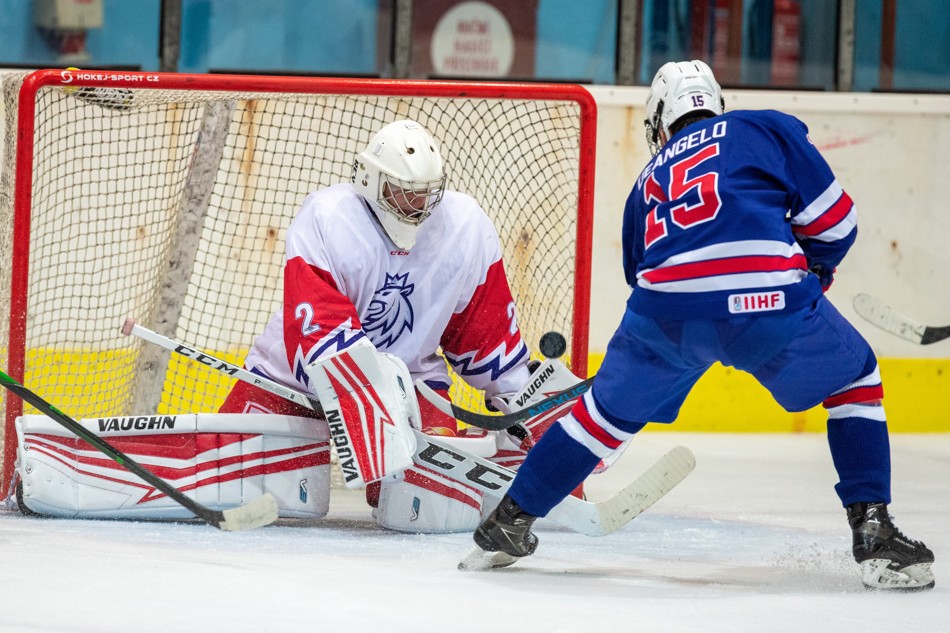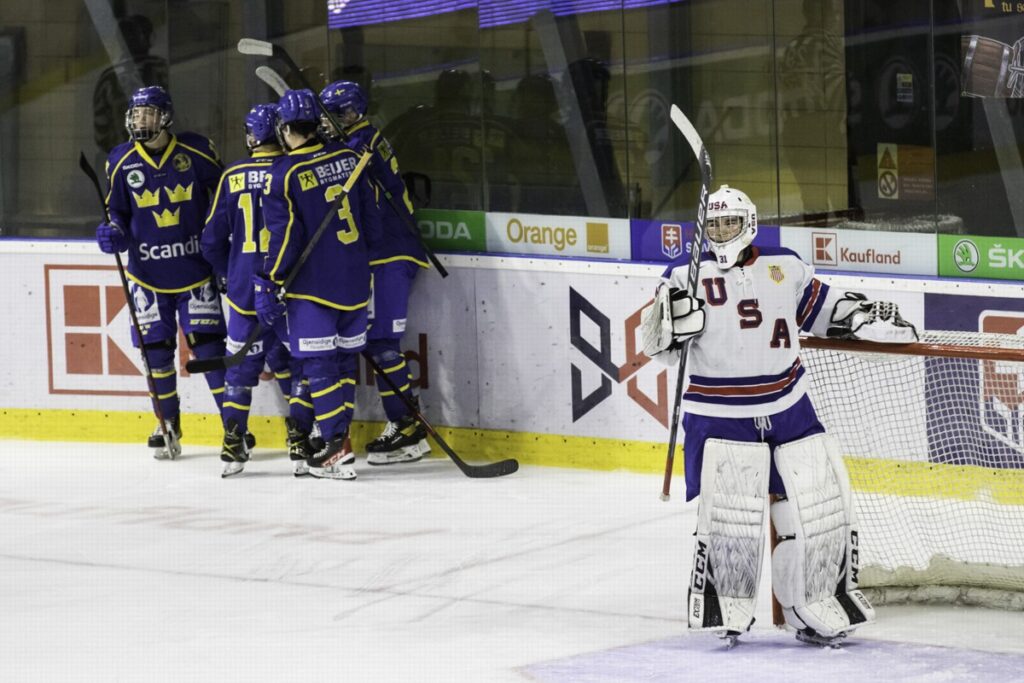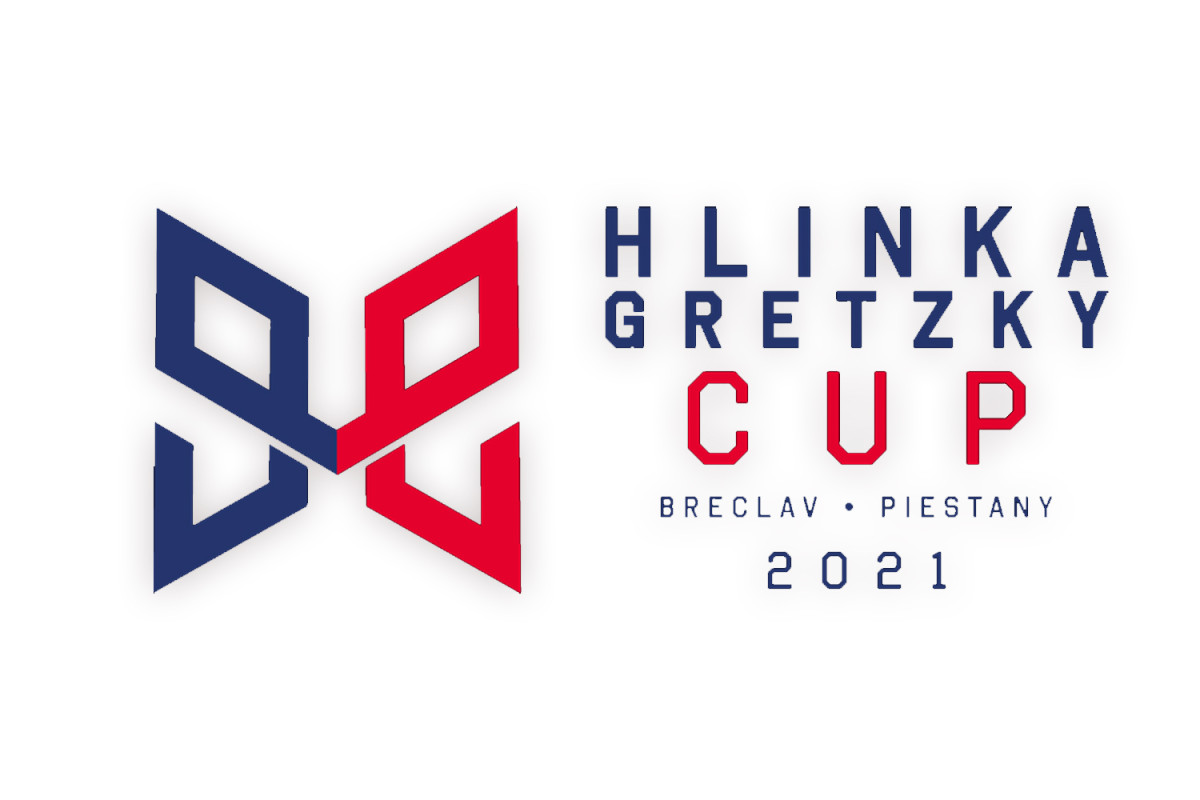By Samuel Dummer
Martin Luther King Jr once said, “We must accept finite disappointment, but never lose infinite hope.”
This holds true in the North American Jr hockey world today. Canadian fans watched the Hlinka Gretzky Cup tournament and grumbled at the fact that Canada did not participate. And we were left with little consolation by the showing of our American friends.
This year, with America being the only representative from this side of the pond, many Canadians were cheering for a successful trip for our neighbors south of the border.
So, how did it go? Well, as far as the American entry was concerned, the tournament didn’t go as planned.
As a fellow North American, my heart goes out to those kids. As it was with high hopes that Team USA entered the Hlinka Gretzky tournament.
Although It would be difficult to find a team entering the tournament that did not truly believe they had the chance to win it. And I can assume the Americans were high on themselves with those same expectations.
However, when it came down to it, their play was up and down throughout the tournament. I am not sure if it was the extended lockdowns or the canceled/shortened seasons compared to the European teams. But, for large stretches of almost every game, the Americans seemed worn out, out of gas.
Players were left chasing the puck in a disorganized mess, many were outskated, or simply outworked at the end of a foot race. While the team did have flashes of great potential and were able to produce a few beautiful shots for the highlight reels, the fans of the USA were left as disappointed as Leaf fans tend to be, year after year.

Jackson Dorrington was easily the most consistent defenseman on the American team. While he may have been on the ice for a goal against or two, his smooth play and general awareness usually lead to the right decisions. When a goal was coughed up on his watch, it was not usually because of an error on his part.
6’2” tall and 192lbs, Dorrington has the size to be a capable NHL rearguard. Remembering that he is only 17 years old, makes you think that he could probably pass as his friend’s cool older brother. The kind they could ring up whenever they needed to sneak into the latest R-rated flick at the local theatre. His stature and general on-ice demeanor will get him looks from the NHL, his play may get him a few calls.
While his stats are limited on his short career thus far, he has steadily been forming into an almost-point-per-game defenceman.
He is a steady and balanced player in his own end. He keeps an active stick to interfere with the passing lanes and he is already beginning to use his larger frame to his advantage. He doesn’t shy away from the dirty areas of the ice and even looks for engagement.
Watching this player develop should be a blessing and pleasure for the United States.
If he continues to commit himself to getting better every day and he learns from the downfalls of disappointing games, Dorrington should find himself one day playing with the big boys of the NHL.
Brennan Ali appeared to be one of the players worth keeping an eye on as the tournament progressed.
The center’s speed and tenacity oftentimes led to turnovers or chances for his team. It was unfortunate that so many of his line-mates had such a hard time burying their opportunities.
His dynamic footwork and agility allow him to create space for himself and cause separation between himself and the defense.
When done well, the Americans were able to capitalize on this with dump and chase opportunities that allowed Ali to switch into high gear.
Ali can use a little work on his scoring touch if he’s looking to really make a name for himself.
While his hard work and quick feet style of play is desirable, without the high goal-scoring pedigree, it can often be looked over for a more “skilled” prospect.
If Ali can get his scoring touch together, lookout for a dynamic player with just a little bit of everything.
Jimmy Clark started the tournament slower than he may have liked. At 6’0” and 174lbs, you would expect to see a tall body with lean speed and decent reach. Clark shows all of this and a little more, even though it may have taken him a little longer to get there.
In the first two games, Clark was almost invisible. He seemed to struggle to get involved or really make anything happen. It was hard to tell if this was simply because of the quality of the competition, or if the American team still needed to knock off the rust of the recent pandemic season. Whatever the reason, it didn’t appear to be a good look for Jimmy or the rest of the American team.
Clark entered his third game of the tournament after losing two straight with his fellow countrymen. After those losses, Clark’s competitive nature seemed to come alive. He came out deciding to play like an early 2000’s racing game; full speed and without a care of who he cut off or hit.
Pressuring the German team relentlessly, he tossed opposing players off their feet behind the net in his own defensive zone and generally made himself a presence felt around the ice. Clarke made it his mission to be involved in what seemed like everything.
While he may not have led the team in goals, assists, or total points, he will do well to continue playing with the same determination and focus in his game. If he can do so, it won’t be long before the VIPs of the hockey world start knocking on his door.

Winger Michael DeAngelo was a pleasant surprise. While he may not yet be seen as a high-end prospect, the potential for a growing flame in his future may still be burning. At 5’11” and 174lbs, he is not the most physically intimidating of players. With a slim build and nearing the age of adulthood, it is difficult to judge whether a player is done growing. This can be a question mark for many developing prospects. At the very least, DeAngelo does well to make you, look past his thin frame and think about what he can do with his feet instead.
DeAngelo appeared to be a player that didn’t mind being in the dirty areas, Despite his relatively slim size and light feet. I wouldn’t count on him quite yet to be a team’s main source of offense, but he could make a beautiful compliment to a high-end skilled forward.
While it is still too early to determine if he is the kind of player that will consistently put points on the board, it was apparent throughout the tournament that he was able to use his slim build and quick feet to generate breakouts and create pressure against the opposition. He was regularly seen jumping the blue line on the forecheck and, much like Ali, the Americans were able to use his speed to their advantage during times they were at their best.
Center Cameron Lund is another player who made the decision to pop off against Germany and make them the victim of a break-out game.
Lund entered the tournament at a reported 6’2” and 181lbs, this made him one of the taller players in the tournament. He could do well to put a few extra pounds onto his tall build, but he was able to use his long limbs and frame effectively in the defensive zone. He also used his long reach to block passing lanes during the forecheck.
After making just a little noise in the first two losses for the American team, Lund put the offense on his back and followed those performances with a four-goal game against the much weaker German team. You could write this off as a fluke of a game. You could believe that he is nothing more than his recorded stats have shown up until now – just shy of a point per game player. But you would be doing the player’s mental toughness and his effort a great disservice.
His patience with the puck and his complete confidence to shoot when he had his chances should just go to show his all-around game is developing as a young playmaker. He is not usually a go-to goal scorer but seems to have a creative knack for finding an open linemate.
Against Germany, he showcased his ability to shoot the puck. Lund showed his abilities to pass with confidence and accuracy. He took this opportunity to quite possibly open the eyes of a few new scouts. They’ll be scribbling notes by his number as they comb over the latest batch of young talent entering eligibility.
It isn’t often that a player can leave an international tournament with a hat-trick under his belt. It is even less likely to have it with a fourth goal to top it off, just for good measure.
The sample size is still small with Lund, as it is with all the new draft-eligible prospects, and the jury may still be out on the ceiling of his potential. But, in the Hlinka tournament, he may have pushed the door open a little further to a bright future.

Lucas Szyszka had to be one of the most aggravating goaltenders to watch in quite some time. He seemed to be technically sound. His butterfly appeared clean, for the most part, and his instincts were there. His ability to track the puck was on display as he made some massive saves when he needed to.
The issues with Szyszka were not whether he had the athleticism or ability to stop the puck. But rather, the question was how to get him to hold out strong in a game that appears to be slipping away.
There are times when an opportunity for greatness can knock on your door. Times when you get the choice of opening one of two doors. Through one door, you rise to the occasion. Through the other, you allow it to slip away and move on to the next name on the list. This time, the American goaltender fell into the latter of these choices.
While he turned in a valiant effort by the end of the tournament, Szyszka’s shutout in his game against Germany was, unfortunately, a little too late. He had already cracked to the pressure when it mattered most.
There is still plenty of promise for the young goaltender and he should not allow a disappointing showing by his team to keep him down for long.
In terms of Szyszka’s technical game, there really wasn’t much that could’ve been a big contributing factor to the losses. Keeping a stick down here, a bad rebound there was all that really led to his goals-against-average. It seemed to be a mix of defensive mistakes within the team, a couple of almost-perfect plays, and just a little down-right awful luck that ultimately led to his GAA. If pressed, Szyszka could work on staying up a little longer, as he seemed to drop a little early for the circumstances.
At 6’2” and 187lbs, Szyszka has the size and technical ability to make it all the way. If he can mentally focus his mind to block out the noise when it is all on the line, he will find improvement in his game. If he can move on from the heavy emotions of a disappointing finish, Szyszka can pave himself the right path to one day playing with the pros.
All in all, the Americans could have come to Slovakia with a little more fight in their game. With the history of America’s accomplishments in the Hlinka tournament fading further in the rear-view, the hopes of their fans may fade with it.
Photos: Jan Beneš

